Japanese Nobel Laureate Shuji Nakamura, known for his invention of blue LED manufacturing technology and several subsequent LED innovations, disclose the history of blue LED and shared with the public his insights concerning the future of the LED industry on 8th Feb. at Academia Sinica. As general lighting has lately come to the stage of maturity, which hindered the LED industry, LED manufacturers are now seeking potential markets where they could recuperate and thrive. In his speech, Nakamura 'illuminated the industry’ by unveiling three future LED applications: Micro-LED, laser lighting, and the Li-fi technology.
Currently teaching at University of California, Santa Barbara, Nakamura, together with the other two fellow researchers Isamu Akasaki and Hiroshi Amano, received the Nobel Prize in Physics in 2014 for ‘developing the manufacturing technology of the blue LED and fostering the emergence of bright, power-saving white LED.’
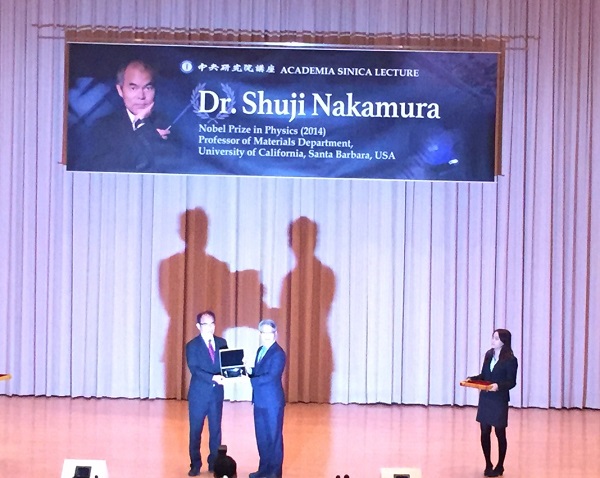 |
|
Professor Nakamura received a badge of honor from Dr. James C. Liao, President of Academia Sinica. (LEDinside) |
Elected to Academia Sinica, Taiwan’s prestigious research institution, in 2016, Professor Nakamura received a badge of honor from Dr. James C. Liao, President of Academia Sinica, before his lecture. President Liao called him ‘a hero’ for Professor Nakamura well exemplified the spirit of a scientist. With his own experience, Nakamura also suggested and encouraged the young generation to engage in their interests to find their callings instead of eyeing top ranking universities at an after-speech press conference.
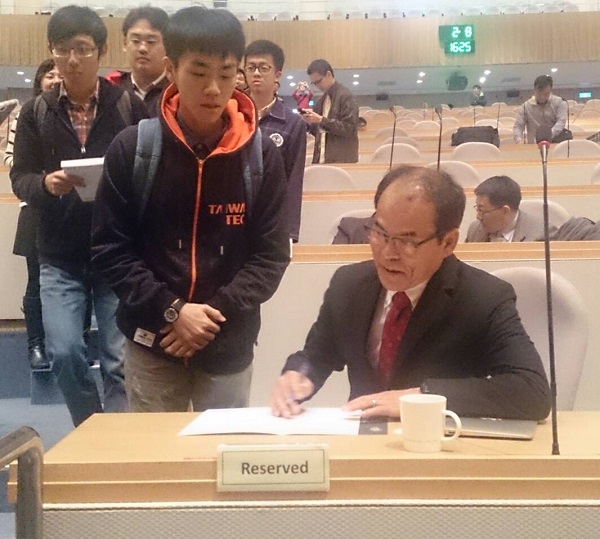 |
|
Students were queuing for Nakamura's autographs after the lecture. (LEDinside) |
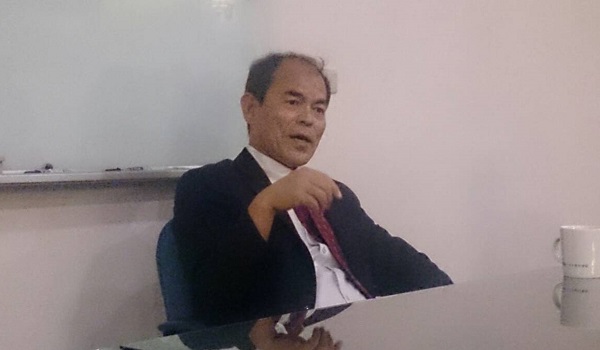 |
|
The Nobel Winner talked at the after-speech press conference. (LEDinside) |
Professor Nakamura pointed out in his lecture that the luminous efficacy of a LED is ten times higher than that of a incandescent lamp, explaining LED lighting saves a drastic amount of energy. Judging by current stats, once LED lighting successfully replaces traditional lighting in Japan, the amount of energy it saves could possibly equal the sum that seven nuclear power plants generate at once. The estimated numbers of nuclear power plants in the States and China would be 19 and 17 respectively if that happens in those two nations. In addition, as a LED could last for 30-50 years, it does not seem a problem to tackle LED waste in the short term.
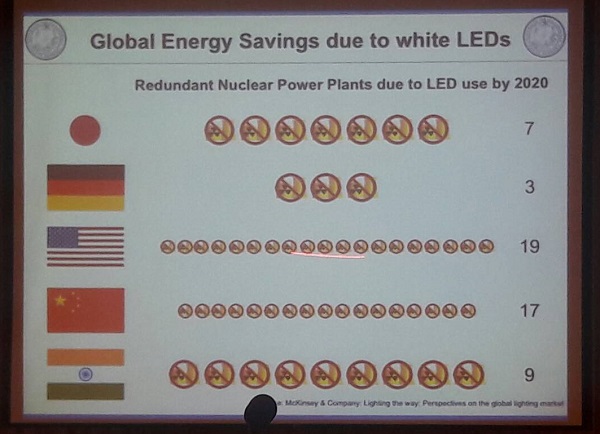 |
|
If LED lighting successfully replaces traditional lighting in Japan, the amount of energy it saves could possibly equal the sum that seven nuclear power plants generate at once. The estimated numbers of nuclear power plants in the States and China would be 19 and 17 respectively if that happens in those two nations. (LEDinside) |
In response to the current dynamic that the LED industry meets market saturation causing a revenue slump, Nakamura explained Micro LED, laser lighting, and the Li-fi technology can be the future the industry looks forward to, yet it takes time and effort, to overcome technical limitations, for the future to come true.
Nakamura also mentioned that there have also emerged several applications beyond his expectation ever since the LED was invented. For instance, researchers at Academia Sinica use blue LEDs to separate malignant cancer cells from normal cells. Recently, Nakamura has been devoted to laser lighting development in hope one day, in terms of general lighting, to replace LED lighting with laser lighting that can already be seen in the automotive lighting field.
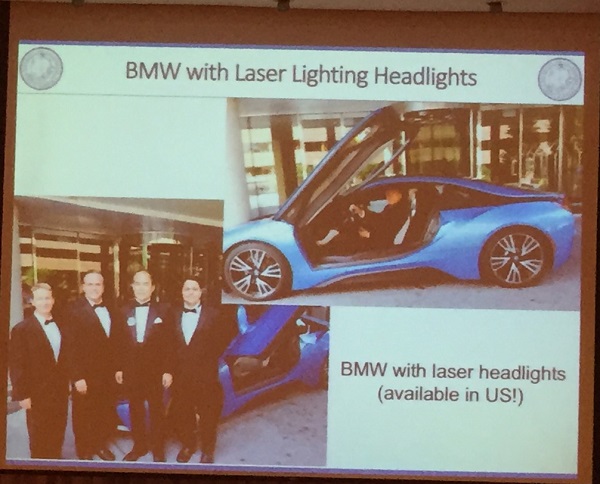 |
|
According to Professor Nakamura, the automobile manufacturer BMW started using laser lighting headlights. (LEDinside) |
Asked about potential LED recycling problems at the after-speech press conference, Nakamura replied in a mellow tone that it should hardly be an issue to recycle LED for now due to its legendary longevity. If there is anything to be concerned with when it comes to LED recycling, it would be precious metals used in LEDs.
Another technology Nakamura considered promising is the Li-fi technology, or Light Fidelity, a Visible Lighting Communication (VLC) system in which wireless communication travels at very high speeds through LEDs or laser light. In an expected future, Nakamura said, computers and other home appliances are able to connect to the Internet with lighting fixtures as media for data transfer.
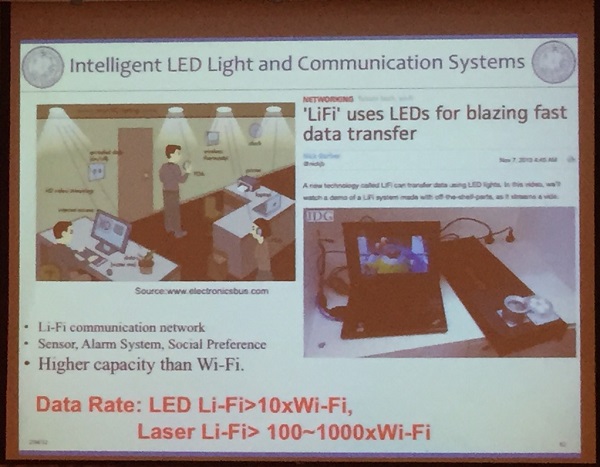 |
|
As the slide showed, data transfer can be done in a jiffy in the future of Li-Fi. (LEDinside) |
The speed of Li-fi using LED is ten times as fast as that of Wi-fi; moreover, the speed of Li-fi using laser light is even a hundred times faster. Another advantage of Li-fi over Wi-fi is that, unlike Wi-fi, it is not limited by bandwidth and the high density of Li-fi users in an area of a certain size, continued Nakamura.
Wi-fi might seem enough for Taiwan due to the size of its territory; however, Li-fi will definitely make lives of people in China much easier with its super high speed enabling videos and movies to be downloaded within seconds, said Nakamura.

















